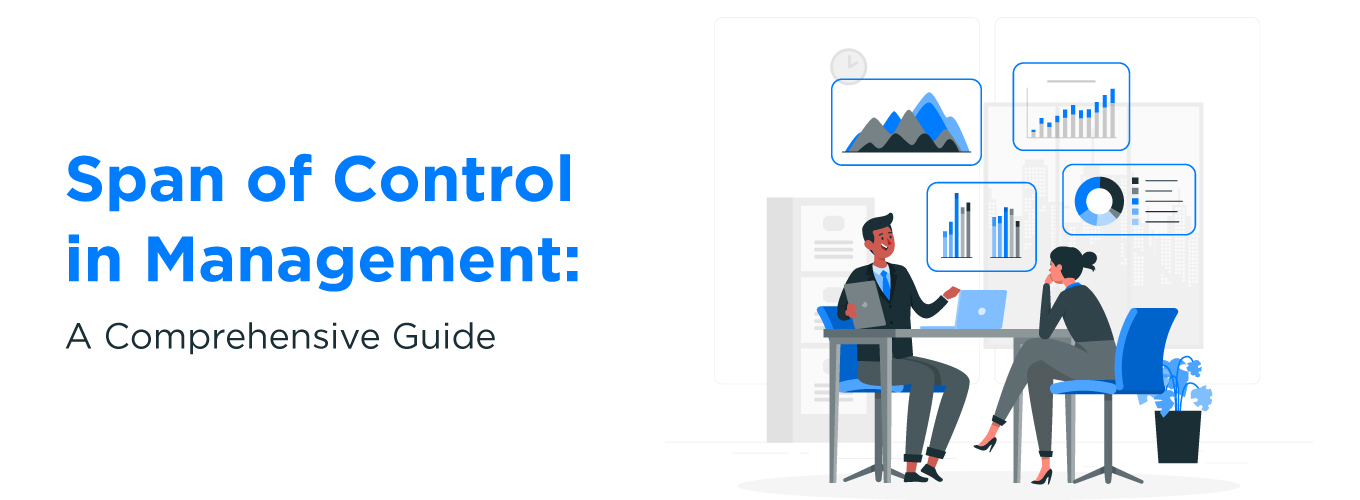Span of Control in Management: A Comprehensive Guide
What is the span of control in management?
The span of control in management refers to the number of people one man can supervise. This affects the effectiveness of directions given and work done by each member within an organisation. In addition, a narrow span ensures fewer people answer directly to the manager, and responses are quicker, but decisions take longer. On the other hand, a broader range means that more people are under one manager’s authority. Broader is better for efficiency; perhaps less close supervision? Like the circus act, if there are too few people around, they will be micromanaged, yet things may get out of hand with too many. Other factors, such as the nature of the work itself and organisational structure, plus managerial ability determine the ideal span. It boils down to supervising a workable number of people without feeling overstressed.
What are the two types of span of control in management?
In spans of control in management, there are primarily two types: narrow spans and wide spans.
The narrow span of control in management means that fewer people are directly under one’s authority. In this arrangement, individual attention and close monitoring are of course, more accessible. The manager has proportionally fewer people under his supervision, so he can more closely guide and monitor their performance, getting to know each individual better. Communication is often more direct and in a relatively small space, heightening awareness of tasks or objectives.
On the contrary, a broad range of control means fewer managers or supervisors per subordinate. Under this system, each manager manages a more significant number of people. This may sound impersonal, but a broad range can speed up operations by smoothing lines of communication and decision-making. On the other hand, wide-span managers are often more used to entrusting subordinates with authority and encouraging them to take initiative. On the other hand, it may be harder for managers to personally pay attention and closely supervise each team member because they have so many people under them.
Narrow and wide spans of control each have good and bad points. Which of them is chosen depends on the type of task, managerial capabilities, organisational structure and company goals. The latter requires centralised decision-making; some need a human touch and oversight of minor details. Balancing these two types is crucial for management and organisational effectiveness.
Table of Contents
Why is the span of control important in management?
Impact planning The span of control is very important in management, as it directly affects organisational efficiency and communication.
It affects organisational structure and workflow. The span of control refers to a manager’s number of subordinates or employees. While a narrow span enables intensive supervision and individual attention, it is sometimes detrimental when oversight of work is difficult or when people need substantial direction. On the other hand, a broad range allows for easy communication and quicker decision-making. Larger groups or organisations tend to be even more efficient. The secret to striking the right balance is preventing tasks from overloading and causing decision-making bottlenecks.
It has an impact on internal channels of communication within the organisation. Communication here is rather detailed and frank, allowing individual players and coaches to understand each other better. The communication can sometimes be more broad and diffuse, which could hasten information exchange but is not as substantive in interaction. Thus, effective communication ensures everyone has similar expectations for the assigned tasks and objectives.
What’s more, the span of control affects managerial efficiency. Narrower spanners enable managers to devote their energies to fewer underlings, offering each one personal assistance and guidance, which promotes staff development. On the other hand, managers whose span of control is larger must give subordinates greater authority to take action on their initiative and develop autonomy this way.
In general, a span of control in management is an essential factor affecting the proportion between supervision and autonomy, communication efficiency, and managerial effectiveness. Getting a grip on the range of control is vital to organisational performance, happiness in employment and the successful implementation of strategic planning.
How do we calculate the span of control in management?
The span of control in management calculation This is a very simple one. The ratio is calculated by taking the number of employees and dividing it by the number overseeing them, i.e., managers or subordinates supervised by others.
For example, suppose a company has 100 employees and five direct managers. The calculation would be:
Total employees divided by number of managers = span of control.
The idea of the span of control is 100 employees for each manager.
Span of Control = 20
Thus, in this case, the span of control is 20, meaning that each manager has authority over 20 people on average.
With this kind of calculation, you can see quantitatively how many people are controlled by each organisation’s leader. The longer this number, the broader its span of control; in other words, each manager controls a more significant number of people. On the other hand, a higher figure indicates that there is less span of control for any one supervisor.
However, it is essential to understand that the ideal size of the span of control depends on factors like work type and difficulty, management capabilities, and organisational system. Of course, there are also circumstances where greater distance is desirable regarding efficiency and communication. Others, however, may benefit from a narrower control range, allowing for greater attention to detail.
By continually reviewing and adjusting the scope of supervision, organisations can find a reasonable balance between oversight on the one hand and space to work independently on behalf of their bosses without forever saddling managers with thick bundles. The span of control can serve as a qualitative index to judge the efficiency of managers and organisational structure, thereby facilitating decision-making in its hierarchy.
Conclusion
To conclude, the scope of control is one end-point element in management. It influences organisational structure and managerial efficiency on several levels. What’s more, communication, efficiency and leadership all depend on subordinates or employees under the wing of a manager. In other words,
Ultimately, the breadth of authority can be a basis for improving managerial effectiveness and organizational design while raising employee satisfaction levels. The correct span of control will not only allow managers to exercise their authority,, make communication much more effective, and strengthen the environment for strategic goals.
Frequently asked questions
What are the layers of span control in management?
Management’s span of control delineates hierarchical levels and their groupings, comprising three main tiers: The range of management extends from Top Management, which oversees the entire organisation or large departments; Middle Management, which provides an intermediary with strategy and execution responsibilities for several units; and Frontline Management directly supervises daily tasks with potentially larger teams. The individual layers have unique authority and communication roles that allow organisational performance by balancing control depth and inter-layer interactions. It is necessary to maintain this balance for efficient management and successful performance of the whole organisation.
What is span control in supply chain management?
The scope and scale of influence within a network is the span of control in supply chain management. Overseas outsourcing management involves overseeing and managing those linked stages, processes, or entities associated with product manufacturing (or service provision).
Supply chain management is a holistic discipline that brings together the entire supply chain, so what does control span mean? Supall management covers everything from suppliers and manufacturers to distributors, logistics, and stocking levels through the final interaction with the end consumer.
What is span control in library management?
In library management, the “span of control” refers to the number of libraries or staff overseen by a librarian or manager, defining their responsibilities and oversight capacity. The distance between control levels is relatively small, indicating the varying degrees of supervision a librarian may provide to their staff. A wide span of control implies tighter supervision and greater personal concern for dispersed staff across multiple libraries. Effective library administration requires a balance between broader and narrower spans of control to manage resources efficiently, recruit staff, and ensure quality service for visitors. Adapting control lines within library organisations enhances efficiency, minimises obstacles, and addresses issues promptly.









